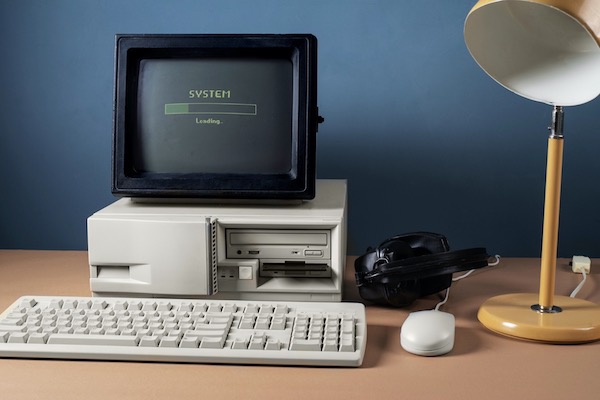Published on the 12/03/2024 | Written by Heather Wright

Old tech dies hard, but GenAI, ERP and automation ride high…
Rigid legacy technology is proving a key stumbling block for companies seeking to improve margins and control costs, with that old infrastructure stopping companies from quickly adapting to new business conditions.
But the Deloitte 2024 MarginPlus study of more than 300 business leaders also shows that despite, or perhaps at least in part because of, those legacy technology issues, companies are looking to technology including GenAI, automation and digital core ERP upgrades to boost efficiency and improve employee and customer experiences.
“The pressure is on across nearly every industry to preserve margins and this will require new approaches including a firmer reliance on technology.”
Half of businesses surveyed cited technology infrastructure challenges as a chief internal barrier to cost control, up from just 31 percent last year, to take top spot – a massive jump from last year’s fifth place.
Other barriers noted this year included the inability to rapidly adjust cost structure to meet demand, and challenges in attracting and retaining key talent.
A Tata Consultancy/AWS survey last year showed the depth of the legacy issue, with more than 66 percent of organisations using legacy applications for core operations and over 60 percent using them for customer-facing functions.
The Deloitte MarginPlus study shows economic uncertainty is driving increasing efforts to improve margins and transform, but that success in those endeavours is proving elusive, with 82 percent of companies admitting they missed their cost reduction targets. That’s up 10 percentage points on last year and the highest failure rate Deloitte has recorded since starting the study in 2008. Half of those companies achieved less than 50 percent of their set targets.
“The pressure is on across nearly every industry to preserve margins and this will require new approaches – a firmer reliance on technology, investment, innovation and (as margin efforts become more targeted) renewed leadership accountability,” the report says.
As inflationary pressures, changing customer buying behaviour, supply chain constraints and increased input costs, among others weigh on companies, they are focusing their efforts on fewer levers to pull as part of their margin improvement strategies. Where in previous years it was common to see companies trying to use many levers at once – last year the average was seven – they’re now concentrating efforts in targeted areas.
Of the nine levers discussed in the report, just three – data and GenAI (52 percent), organisation structural design (49 percent) and process reengineering and automation (45 percent) – made the cut for at least 45 percent of respondents.
Digital core ERP upgrades was a considered a key lever by 27 percent of those surveyed, with cloud architecture adoption (19 percent) also in the mix.
Freight company Toll Group is among those to experience the benefits of moving legacy platforms into – or at least towards – retirement. The company has moved a number of its legacy offerings covering a range of technologies and languages towards retirement, using low-code.
Last year Stuart Robertson, Toll Group’s head of digital technologies, noted that had already resulted in a 40 percent reduction in the cost of delivering project, alongside a halving of the time it took to deliver those project. He’s clear too, about the impact of legacy systems and processes with regards to creating inefficiencies and high costs.
This year’s Deloitte results are perhaps a logical follow-on from last year’s survey which saw organisations shifting their margin priorities from small-scale, isolated initiatives to the building of new technology-based capabilities to help reduce labour needs while providing a foundation for transformation, flexibility and growth. It showed automation and cognitive solutions, such as artificial intelligence and machine learning, were front of mind last year.
But AI requires having your house in order from when it come to infrastructure – and data – possibly driving the increased focus on technology infrastructure.
Old and outdated systems can make integrating new offerings prohibitively costly, with hidden challenges holding the potential to push projects over budget and over deadline.
Recently, Morgan Stanley analysts noted that mentions of ‘operational efficiency’ have skyrocketed in transcripts of recent earnings reports from US companies. They’re also discussing reallocation of funds to invest in new technologies ‘that can drive future productivity like AI’, Morgan Stanley says.
Deloitte says just 21 percent of the companies it surveyed have not already used GenAI. For 61 percent of those that are using GenAI, 61 percent are using GenAI as a tool to support their transformation, while for 23 percent, GenAI is driving the transformation.
Short of wholesale transformation, businesses are using GenAI to drive efficiency, enhance customer or employee experience or develop new revenue or business, the Deloitte report says.
It notes, however, that transformation efforts require more than just a desire or commitment, with more defined roles, structure and funding required to support them. Half of respondents say they’re adding roles specifically for transformation, and many are budgeting separately for their transformation initiatives.
They’re also accelerating existing technology transformation timelines (51 percent).



























